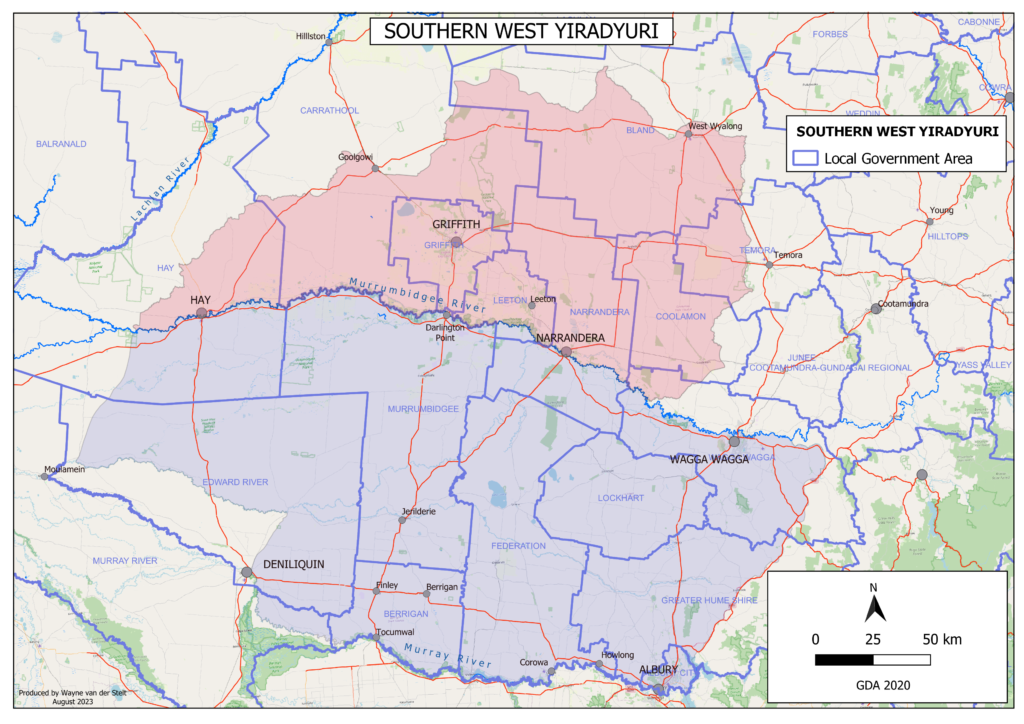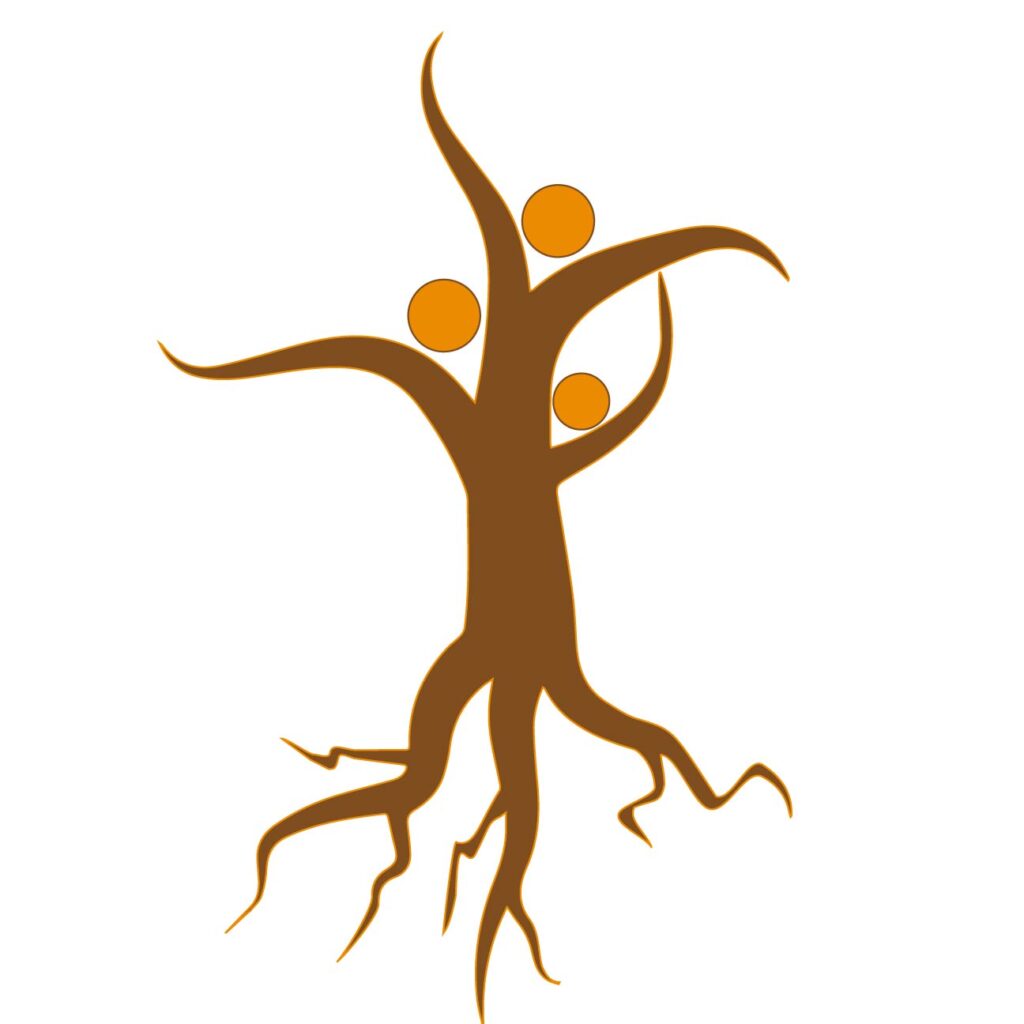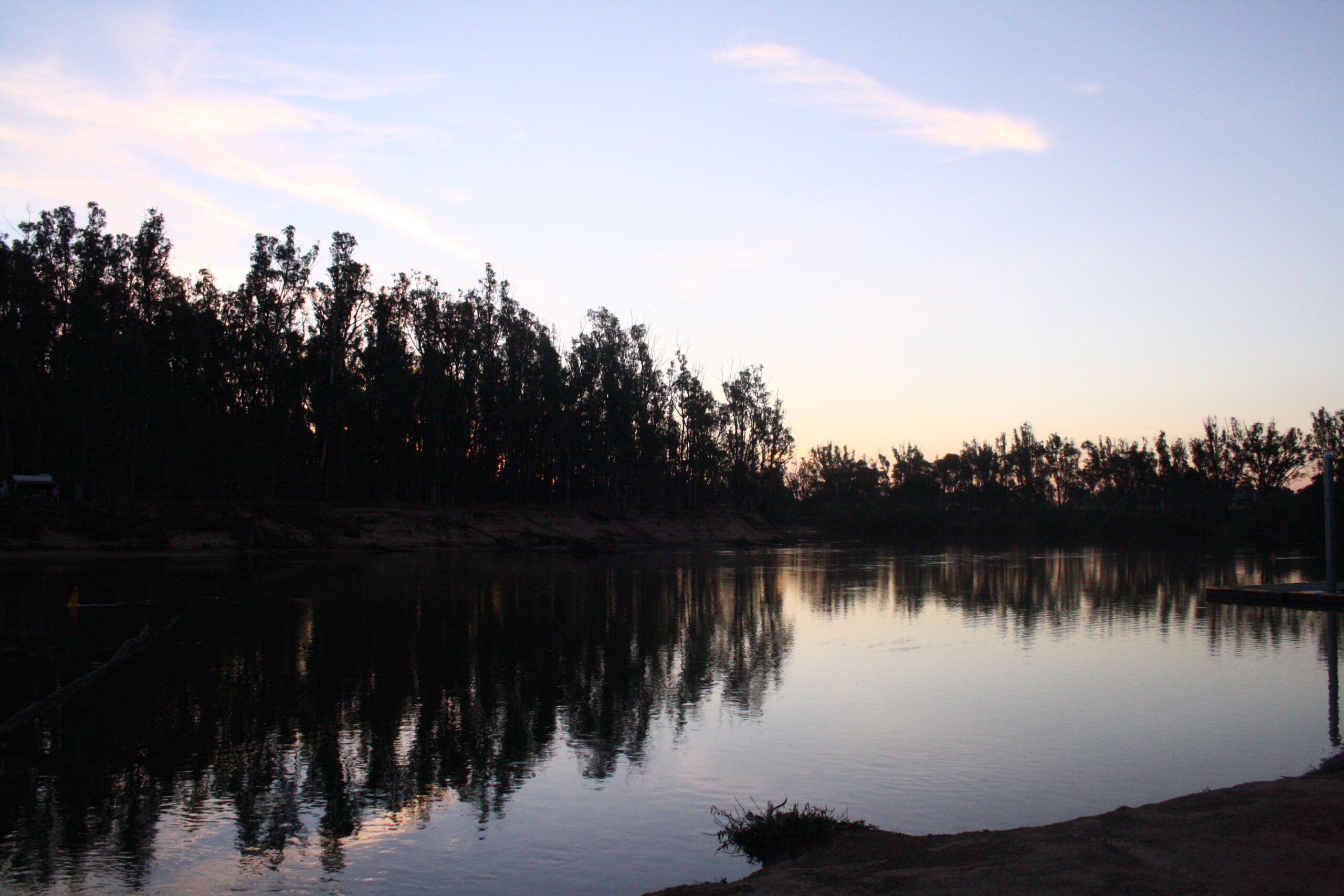Spelling Yiradyuri vs Wiradjuri
It is important to understand why we spell Wiradjuri as Yiradyuri.
- Our old people have always, and our Elders continue to pronounce ‘Wiradjuri’ as ‘Yiradyuri’ – the spoken sound is clearly different.
- When said as Yiradyuri, the prominent sound is the Y. The second vowel is barely heard and therefore not too important and could be spelt with either an A, I or U. For example: Yaradyuri, Yiradyuri or Yuradyuri.
- Wiradjuri is a large nation and there are many differences in how Wiradjuri is pronounced and written across Wiradjuri Country.
- In Southern Wirad(j)uri, it is written as Wirad(y)uri, with a ‘y’ not a ‘j’. This acknowledges and respects the dialectical difference of southern Wiradyuri whilst replacing the j, as it is not a letter in the language being taught.
- Wiradjuri is the accepted uniform spelling across Australia and commonly used.
- Wiradyuri is the preferred spelling across southern Wiradjuri.
- Yiradyuri is the traditional pronunciation west of Wagga Wagga, and along both sides of the Murrumbidgee river.
- AIATSIS Collection (2021) provides over 60 Wiradyuri spellings recorded by Norman Tindale and Geoffrey O’Grady. The different spelling is due to early ethnographers writing an english translation of what they could hear being said by Wiradyuri people at the time.
- Wiradyuri, like all of Australia’s First Nations peoples, had an oral language and therefore no one spelling of any word.
To learn more about Wiradjuri language, please visit:
Yiradyuri pronunciation

About the Corporation
The name of the Corporation is Southern West Yiradyuri Clans Land, Water and Sky Country Aboriginal Corporation (the Corporation). Southern West Yiradyuri people hold the allodial rights of our Country which have never been, and never will be, ceded.
Approximately eight years was spent, by a number of Yiradyuri people, researching to find evidence that supported our oral knowledges and confirming everything with Yiradyuri Elders. It was critical that we could find historical accounts confirming what we already know relating to our clan groups and the extent of the Country that Southern West Yiradyuri have inherent rights and obligations over. It was equally critical that we worked through a governance model that represented our traditional lore, law, customs and protocols and could be applied in a contemporary context. The governance model took three years to refine with the input from many Yiradyuri and other Aboriginal people.
The principal objective of the corporation is to promote, protect and enhance the health, wellbeing, equity, culture and connectedness of Southern West Yiradyuri People. Underpinning the principal objective is the care for, and protection of, Gunhi Dhaagun (Mother Earth) and making culturally informed decisions that will positively benefit future generations, whilst supporting Wiradyuri Nation building collectively with the guidance of Elders, through the Corporation’s Elders’ Council which holds the responsibility of Keeping Community.
The Corporation has been established:
- by Southern West Yiradyuri people, including both Traditional Owners and Aboriginal Kinship members.
- as the body that has cultural authority to speak for Southern West Yiradyuri Country.
- to advance native title rights and recognition, and treaty negotiations.
- to address the lack of voice and action protecting our Land, Water and Sky Country.
- to ensure our Traditional Owner rights and interests are recognised now and into the future.
- to take the measures required to ensure that future generations have access to our Country, cultural and sacred places that will allow us to continue practising our culture as we have done since time immemorial.
- to show leadership in Aboriginal led governance that is underpinned by our Lore, Law, Customs and Protocols.
NSW Local Government Areas
The below Local Government Areas are located within Southern West Yiradyuri Country:

- Mary Ann Howell/Foote. b. 1837, Yanco NSW.
- Jacky and Annie Mellan. b. (circa) 1830s, around Waddi NSW.
- Susan Christian. b.1844, Murrumbidgee NSW.
- Kitty Webster. b. (circa) 1840s, around Conargo NSW.
- Caroline Bradley. b. (circa) 1840s, around Carathool NSW.
Important note: There may be additional apical ancestors that we’re not aware of, we will include them as they are confirmed.

What is an Apical Ancestor

Southern West Yiradyuri Country sits both sides of Bila Marrambidya
Bila Marrambidya (the Murrumbidgee River) runs through the centre of Southern West Yiradyuri Country and holds great significance to our people. Our oral knowledge tells us how the river was created by a girawu (tree goanna) wife, and her bilawir (digging stick) and is an important part of our beliefs and lore.
Our culture is strong and vibrant – more than 60,000 years and still flourishing
Unbroken connection to Country, Culture and each other

We continue to live by our lore, law, values and expectations as our old people did before us, since time immemorial.
We have a shared responsibility to continue strengthening our connection to Country, Culture and each other.

